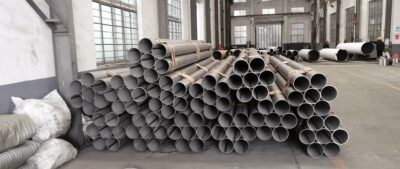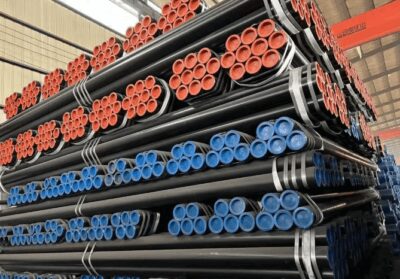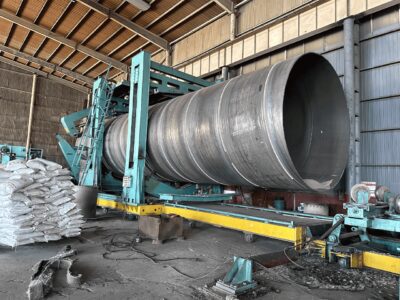CURABITUR ALIQUET QUAM POSUERE
Welcome Aboard Us!
Subscribe to our emails for the latest industry updates and special offers.
Will be used in accordance with our Privay Policy

As an important part of steel products, steel pipe is the most commonly used and largest component in pressure pipelines, its weight accounts for nearly 2/3 of the entire pressure pipeline, and the investment accounts for nearly 3/5. Therefore, whether the pipe selection is good or bad, whether it is economic and reasonable, directly affects the safety and investment cost of the production device.


There are two main classification methods:
According to the use of the steel pipe classification, divided into structural steel pipe and fluid transport steel pipe: structural steel pipe is mainly used for general metal structures such as Bridges, beams, steel frames, etc., it only requires to ensure strength and stiffness, and the tightness of the steel pipe does not require.
The steel pipe for fluid transportation is mainly used for fluid transportation with pressure, which in addition to ensuring the strength and stiffness that meet the corresponding requirements, but also to ensure the tightness, that is, the steel pipe is required to perform a hydraulic test one by one before leaving the factory.
Especially for petrochemical pipelines, the medium it transmits is often flammable, explosive, toxic, temperature, pressure medium, so it should be used for fluid transport with steel pipes. In the actual engineering design, procurement and construction, the phenomenon of replacing steel pipes for fluid transportation with structural steel pipes is not allowed.
According to the different classification of the manufacturing process and the shape of the tube blank used, it can be divided into seamless steel pipe (round blank) and welded steel pipe (plate, with blank) two categories.
(1) Seamless steel pipe
The advantage of seamless steel pipe is that there is no weld, which is often used in some important occasions, such as high pressure, high temperature, corrosion resistance and other occasions. Seamless steel pipes can be used up to 660mm, and hot rolled steel pipes are often used up to 406mm. The diameter above 406 is hot expanding rolling, the general hot expanding steel pipe wall thickness deviation is large, the surface quality is poor, so it is less used.


According to different manufacturing processes, seamless steel pipes are divided into hot rolled (extrusion) seamless steel pipes and cold drawn (rolled) seamless steel pipes. Cold drawn (rolled) pipe is divided into two kinds: round pipe and shaped pipe. The process flow is as follows: hot rolling (or extrusion) seamless steel pipe: perforated pipe billet – – heat – – – – > three roll skew rolling, rolling, or pressing – – to take off the tube – – sizing (or reducing) – – cooling – – tube billets – – straightening – – hydrostatic test or inspection – – put in storage
Cold drawing (rolling) seamless steel pipe, perforated pipe billet – – heat – – – – – – annealing – – acid washing heading – – greased (copper) – – multi-channel time cold drawn (cold rolled) – – tube billets – – heat treatment – – straightening – – hydrostatic test (NDT) – > tag – > put in storage.
(2) Welded steel pipe
Commonly used welded steel pipes are divided into the following three types according to the welding process used in their production.


① Continuous furnace welding (forging welding) steel pipe: it is characterized by high production efficiency and low production cost, but the metallurgical combination of the welded joint is incomplete, the quality of the weld is poor, and the comprehensive mechanical properties are poor.
② Resistance welding steel pipe: it is characterized by high production efficiency, high degree of automation, no need for welding electrode and flux, small damage to the base metal, and small deformation and residual stress after welding. However, its production equipment is more complex, the equipment investment is high, and the surface quality requirements of welded joints are also relatively high.
(3) Arc welded steel pipe: It is characterized by the complete metallurgical combination of the welded joint, and the mechanical properties of the joint can fully reach or approach the mechanical properties of the base material. According to the shape of the weld, the arc welded steel pipe can be divided into two kinds: straight seam pipe and spiral weld pipe. According to the different protection methods adopted during welding, the arc welded steel pipe can be divided into two types: submerged arc welded steel pipe and molten gas shielded welded steel pipe.
(3) Welded steel pipes for fluid transportation mainly use the following three welding methods: straight seam high-frequency resistance welding pipe (HFW), straight seam submerged arc welding pipe (SAWL or LSAW), spiral seam submerged arc welding pipe (SAWH or SSAW).
① Straight seam submerged arc welded pipe (SAWL) : according to the different forming methods can be divided into: UOE welded pipe, JCOE welded pipe, RBE welded pipe.
② Straight seam high frequency resistance welded pipe (HFW)
Straight slit high frequency resistance welded pipe (HFW) is a process in which hot rolled coil is formed by continuous roll forming machine, and the butt edge of the tube blank is heated and melted by the resistance heat generated by high frequency current or induced high frequency current on the basis of skin effect and proximity effect, and then fused under the action of extrusion roll.
The spiral seam submerged arc welded pipe is widely used in the oil and gas transmission industry in China, and is also widely used in Canada, Russia, Germany and other foreign countries, and even used in anti-sulfur and submarine pipelines; This kind of pipe making unit has the characteristics of high production flexibility and low cost.
Domestic commonly used welded steel pipe for fluid transport standards:
GB/T3091(Welded steel pipe for low pressure fluid transport). Mainly used for conveying water, gas, air, oil and heating hot water or steam and other general low pressure fluids and other purposes. It represents grade Q235A steel.
GB/T14980(large diameter electric welded steel pipe for low pressure fluid transport). Mainly used for conveying water, sewage, gas, air heating steam and other low pressure fluids and other purposes. It represents grade Q235A steel.
GB/T12771(Welded stainless steel pipe for fluid transport). Mainly used for conveying low pressure corrosive media. The steel number is 0Cr13, 0Cr19Ni9, 00Cr19Ni11, 00Cr17, 0Cr18Ni11Nb, 0017Cr17Ni14Mo2, etc.
GB9711(Technical delivery conditions of steel pipes for oil and gas industry) standard, the main steel numbers L175, L210, L245, L290, L320, L360, L390, L415, L450, L485, L550.